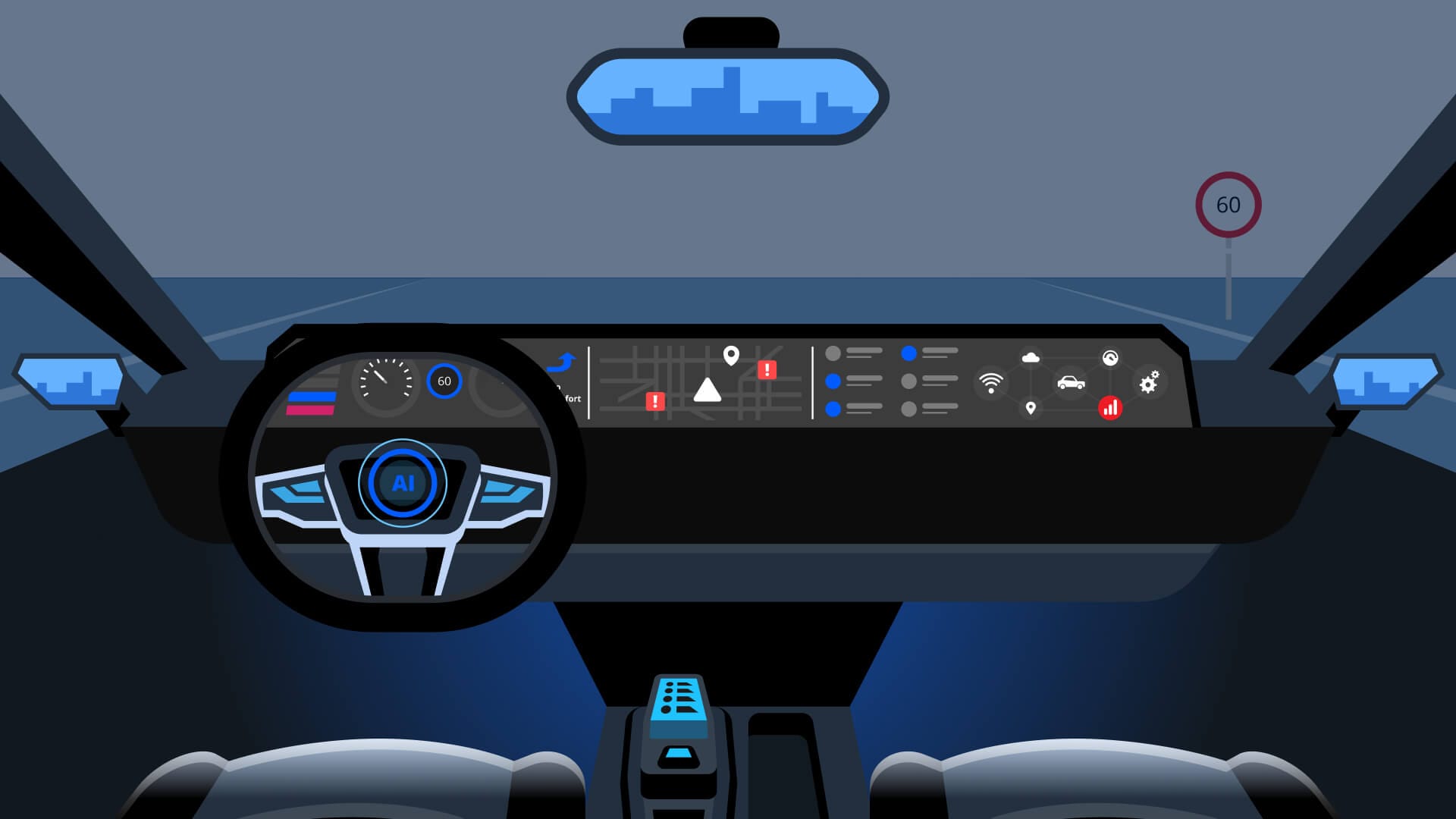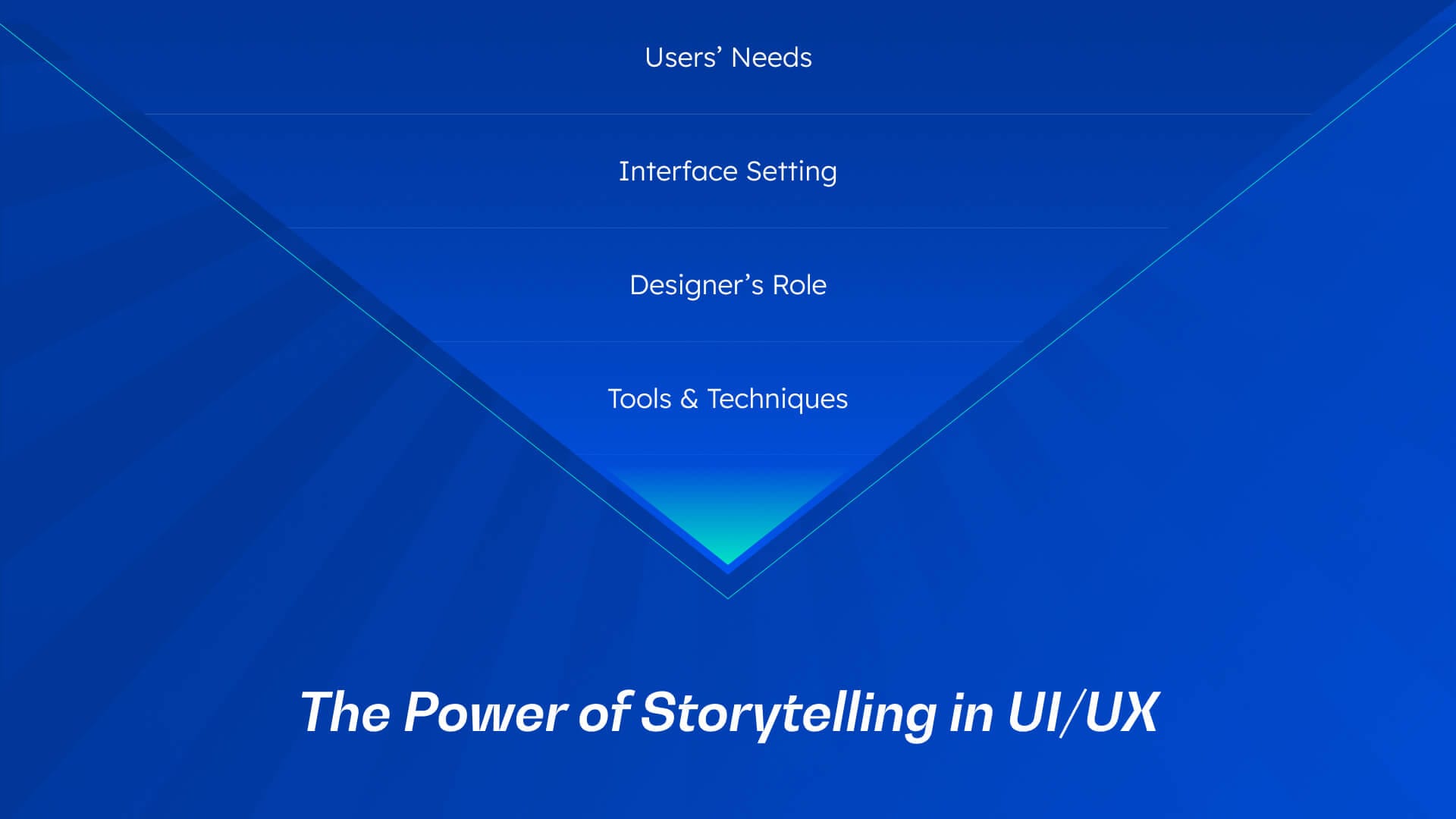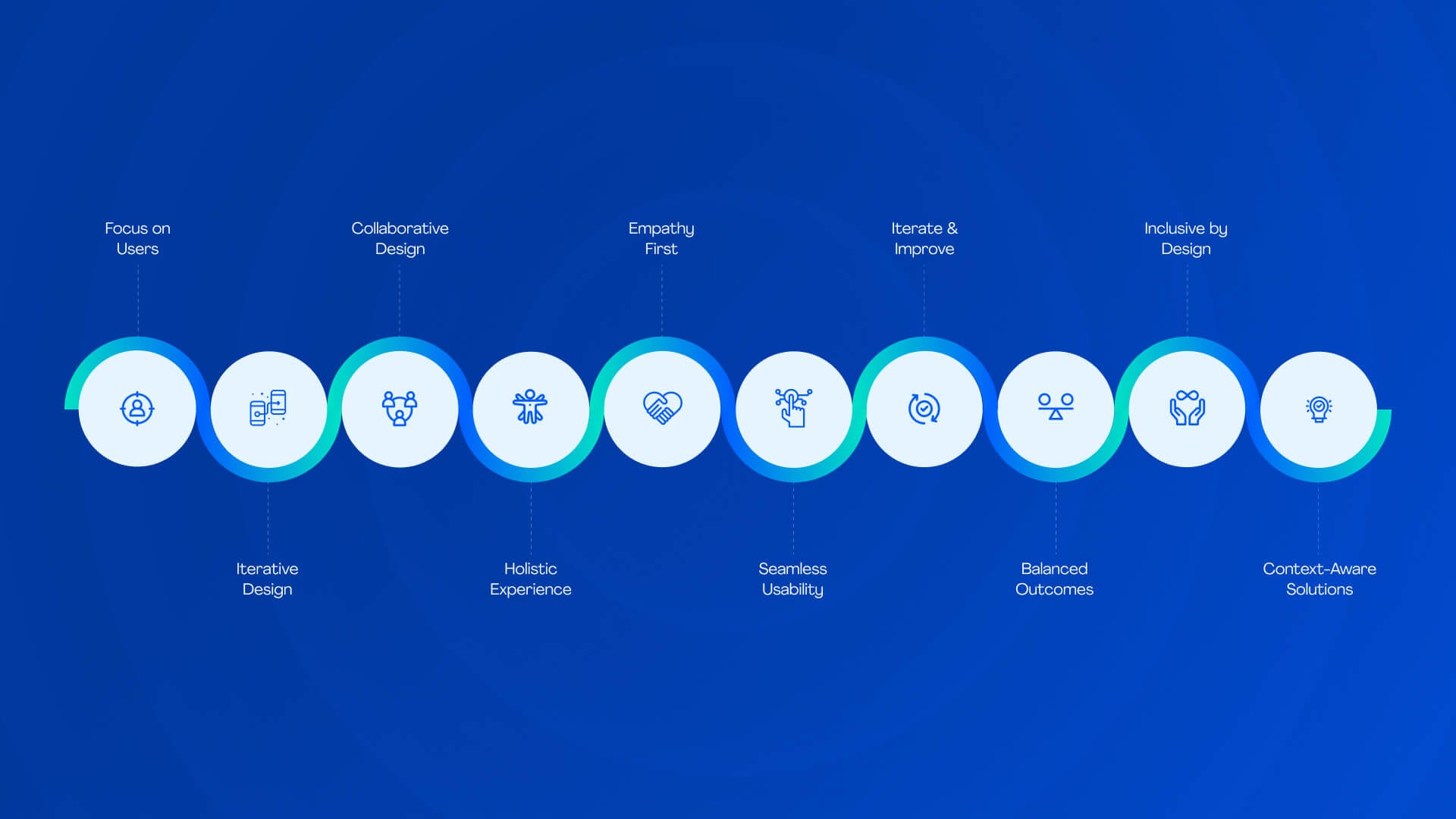With the digital advancements of today, delivering a seamless user experience has become a key for any product design, and human-centered design (HCD) is thriving in the market. More companies are rethinking to shift their approach from product-focused strategies to user-first methodologies that align with the needs and user behaviour.This shift is backed by the global growth of UX services, which was valued at USD 4.68 billion in 2024 and is now increasing rapidly, from USD 6.40 billion in 2025 to a massive USD 54.93 billion by 2032. The increase in the numbers reflects how companies across industries are trying to create intuitive and attractive, smooth experiences. This has now become a necessity and not optional.
Human-centered design is also proving its worth in measurable ways. A survey shows that products that are developed using HCD principles increase user satisfaction by more than 50% and reduce fallback, improving engagement rates. As for businesses, the priority is to provide quality, build trust, and attract loyal customers to increase ROI.
What is Human-Centered Design (HCD)?
HCD is about keeping people first, their needs, and understanding their emotions to shape solutions. Focusing and blending empathy with innovation, human-centered design ensures services and products are not only functional but meaningful and loved by customers.
HCD serves as the link between genuine human feelings, expectations, and issues merged with digital enhancements to build. The numbers and equations we read earlier back this up, as businesses are prioritizing UX more than anything with the help of HCD.
The Core Principles of HCD in UX
Human-Centered Design (HCD) is no more a method but a mindset to improve UX. It is about creating products and solutions that work for users and not only benefit the business. Let us study the core principles of HCD in UX.
Focus on Users
HCD is all about what the users need, and so it starts and ends with users. Instead of building solutions around assumptions, the design process involves real insights from feedback and validation. This ensures the solutions are aligned with the user expectations.
Iterative Design
When we talk about iterative design, it is beyond the usual testing procedures. A constant evolution before any product is launched. They grow, adapt, and transform with the user's needs and technological shifts.
Multidisciplinary Approach
HCD solutions often require collaboration with developers, designers, marketers, and other departments that contribute to shaping better experiences. This diversity of perspectives ensures an impactful product.
Holistic Experience
Human-centered design is not a single interaction process. It observes the entire journey of a user across multiple touchpoints from the first impression to the checkout of the user. The duration a user spent during the flow in an app. The aim is to craft a positive and consistent experience at every stage.
Empathy First
Every effective user experience starts with a thorough comprehension. This entails going beyond quick surveys, interviewing people, seeing actual behavior, making empathy maps, and comprehending the environment in which users function. You may create solutions that feel customized when you consider the world from their perspective.
Usability That Feels Invisible
If you create the best design, it works wonders by itself, and you do not have to make efforts to market. Navigation and interactions flow smoothly. When usability is seamless, users can focus on their goals instead of managing the product and its issues.
Iterate, Iterate, Iterate
HCD thrives on testing stages, learning, iterating, and refining. Like building any application, HCD builds prototypes for a set of users to experience. Gather feedback and improvise accordingly. Perfection is the outcome, and it is received only after multiple cycles of testing and improving until perfection.
Business Goals+ User Happiness
Both business and user experience go together. If a product satisfies the user but does not serve business goals, it won’t last for long. The profitable spot is that both business goals and user expectations should be met to sustain in the market.
Inclusive by Design
HCD considers everyone from designing for accessibility and being mindful of cultural differences. Screen readers, alternate navigation methods, etc, are a foundation of better HDC in UX design and not an afterthought.
Context-Aware Solutions
Good UX adapts to the environment, whether it’s a mobile app that works offline for rural users or a dashboard that supports multitasking for busy professionals. HCD designs for real-life conditions, not just ideal scenarios.
In short, HCD keeps humans at the center, balancing empathy, usability, and business sense to create experiences that genuinely make life easier and better.
The UX Design Process Through an HCD Lens
Human-Centered Design reshapes the traditional UX process by putting real people at the center of every decision. Instead of designing based on assumptions, you design with your users, for your users. Here’s how each step plays out when viewed through an HCD approach:
Research & Discovery
Understanding the narratives behind user behaviors is the goal of research in HCD-driven UX, which goes beyond simply gathering demographic data. To adequately understand the needs, motivations, and pain points of their consumers, teams employ surveys, contextual inquiries, interviews, and path mapping. It goes beyond simply asking, "What do you want?" It also involves figuring out why customers act in certain ways. Observing someone use a banking app, for instance, can reveal annoyances that they might not mention in a survey. The goal is to formulate the right problems before rushing to find answers.
Ideation & Concepting
Once you grasp the problem space, ideation becomes a collaborative and creative process. HCD emphasizes co-creation, which involves brainstorming meetings with designers, developers, stakeholders, and, on occasion, users. Methods that involve drawing and mind mapping can assist in developing a wide range of ideas. The emphasis is on quantity first, allowing unusual ideas to emerge before narrowing them down. By basing ideation on research findings, each thought is linked to a genuine consumer need, rather than merely a cool feature.
Prototyping & Testing
HCD prefers low- to medium-fidelity prototypes that can be quickly created and tested, such as wireframes, clickable mock-ups, or paper sketches. These prototypes are not finished designs, but rather conversation starters. The testing process comprises presenting these prototypes to actual users and asking them to fulfill tasks. The idea is to observe their behavior, note where they get stuck, and assess how intuitive the design is. Decisions are made based on observed user interactions, not on personal preferences.
Improvise Based on Feedback
Iteration is when HCD shines. Testing feedback is not only gathered but also acted on. If necessary, the team improves layouts, modifies navigation flows, simplifies language, or fully redesigns functionality. This stage can be done numerous times in quick succession, each time narrowing the gap between user expectations and experience. The design, test, and improve loop ensures that the product becomes more aligned with consumer desires with each iteration.
Implementation & Continuous Optimization
Once the revised design has been built and launched, the work does not stop. HCD supports ongoing monitoring of real-world usage through analytics, heatmaps, and follow-up interviews. Continuous optimization includes being willing to adapt the product as consumer needs change. Even simple improvements, such as shorter checkout lines or faster load times, can greatly boost satisfaction and engagement. The product is considered a living entity that evolves alongside its users.
Based on the HCD approach, this process is flexible, adaptive, and always grounded in human insight. By the time a product goes live, it is more than just a digital tool; it is a meaningful solution with which people can relate.
Benefits and Real-World Impact
Deeper User Understanding
HCD places more emphasis on getting to know the people you're designing for than it does on making assumptions. You can identify genuine problems and aspirations that lead to better solutions by using observation, empathy mapping, and interviews.
Higher User Satisfaction
Customers are more likely to like and be loyal to a product when they feel that it's simple and easy to navigate. By ensuring that design choices closely match user expectations, HCD increases user satisfaction and loyalty.
Reduced Risk of Failure
Before launching, you can find and fix any usability problems by testing concepts with actual people. This avoids the hassle of significant post-launch redesigns and saves time and money.
More Innovative Solutions
Design that is driven by empathy frequently highlights needs that could otherwise go overlooked. This results in innovative, unique ideas that genuinely set your product apart from the competition.
Stronger Collaboration Across Teams
HCD benefits greatly from interdisciplinary input. Contributions from designers, developers, marketers, and even end users promote coherence and a feeling of collective ownership.
Long-Term Product Success
HCD incorporates a feedback loop into the lifecycle, and does not just follow an approach that is not touched once completed. Future enhancements are guided by ongoing user insights, which help the product remain relevant over time.
Higher Conversion Rates
Website conversions can rise by up to 200% with a well-designed user interface and 400% with an improved user experience. Because of this, HCD has a direct effect on sales and revenue potential and has been shown to be a driver of corporate growth.
Best Practices for Implementing HCD in UX Design
Bringing Human-Centered Design (HCD) into UX work involves creating solutions that genuinely meet people’s needs. Below are some proven practices to help you embed HCD effectively in your process.
Talk to Real Users, Early and Often
Understanding real-world demands and pain spots requires the use of user interviews, surveys, and shadowing sessions. You may avoid developing features based on presumptions by interacting with users from the beginning and keeping up a constant conversation. The design process remains grounded in reality thanks to this candid feedback.
Prototype Quickly & Seek Feedback
Perfection can be a trap. Whether they are wireframes, interactive mockups, or paper sketches, make low-fidelity prototypes early on and test them with people. Early feedback makes sure you're iterating in the proper direction by assisting you in identifying usability issues prior to investing significant resources.
Keep Accessibility Front and Center
Everyone benefits from inclusive design, not only those with disabilities. From the beginning, take into account keyboard navigation, screen reader compatibility, font size, and color contrast. Designing with accessibility in mind increases usability, broadens your audience, and shows social responsibility.
Leverage Data and Qualitative Insights
A more comprehensive understanding of behavior is produced when analytics and user stories are combined. Click-through rates, duration on task, and drop-off points are examples of quantitative measures that might support or contradict user statements. This harmony between qualitative and quantitative information aids in the confident refinement of decisions.
Scale Design with Systems
Visual and functional consistency between products is ensured by a strong design system that includes reusable parts, patterns, and style rules. Development is accelerated, inconsistencies are decreased, and teams are able to concentrate more on resolving actual user issues rather than reimagining UI components.
By putting these best practices into reality, goods become more intuitive, reliable, and pleasurable in addition to being more usable. Your UX process becomes more flexible, data-informed, and sympathetic with HCD, which eventually results in experiences that users like and return to.
How TheFinch Design Brings HCD to Life
At TheFinch Design, HCD is a methodology used and a core philosophy that shapes every UX solution delivered. Our approach is to understand the users, business goals, user preferences, and pain points through thorough research. This helps us give a clear idea of what the next step is with a purposeful and engaging outcome.
According to user research, smarter filtering alone can cut down on shopping time by 44%, facilitating easier navigation and speedier decision-making. Poor user experiences, however, continue to cost many eCommerce companies up to 35% of their potential revenue. By tackling these gaps head-on, our HCD-driven approach creates solutions that are both visually pleasing and flawlessly practical.
We design interfaces that keep consumers interested for longer by emphasizing relevance, clarity, and simplicity. This increases conversions and strengthens brand loyalty. Empathy guides every design choice, which is then evaluated on actual users and improved for quantifiable outcomes.
With TheFinch Design, you don’t just get a UI/UX service; you gain a partner committed to turning user satisfaction into business growth, ensuring every click, swipe, and scroll delivers value for both your audience and your bottom line.
Conclusion
You can experience amazing things happening when you keep the real users at the heart of your design. The decision alone stands when the product is built to enhance user satisfaction and keep both business and user goals in mind. User satisfaction increases, and so do company results. It's more than just designing visually appealing interfaces.
We believe that memorable experiences and good user experience are connected by Human-centered design. Every project offers the chance to design with empathy, turning concepts into solutions that people genuinely like and can relate to. We are prepared to collaborate if you are prepared to make a significant impact.
Ravi Talajiya
CEO of TheFinch
With over a decade of experience in digital design and business strategy, Ravi leads TheFinch with a vision to bridge creativity and purpose. His passion lies in helping brands scale through design thinking, innovation, and a deep understanding of user behavior.





















